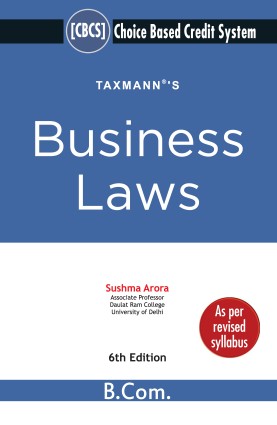Winding Up & Dissolution of LLP
- Blog|Insolvency and Bankruptcy Code|
- 2 Min Read
- By Taxmann
- |
- Last Updated on 31 December, 2021
What is a Limited Liability Partnership (LLP)?
LLP is a body corporate and an artificial person which is created by a legal process called ‘Incorporation’ and its existence comes to an end by another legal process called ‘Dissolution’. On the dissolution of LLP, its name is struck off from the records of ROC and the fact is published in the official Gazette.
Rules for Winding Up and Dissolution of LLP
1. According to Sec. 65, the Central Government may make rules for the provisions in relation to winding up and dissolution of LLPs.
2. Section 67 of the LLP Act, 2008 confers the powers on the Central Government to direct that any of the provisions of the Companies Act, 1956 similar or with modifications specified in the notification shall apply to any LLP. The Central Government issued notification vide GSR 6(E), dated 6th January, 2010, directing that certain sections of the Companies Act, 1956 shall apply to winding up of LLPs with modifications specified in the notification.
3. The Central Government has also notified the “Limited Liability Partnership (Winding up and Dissolution) Rules, 2012” vide notifica-tion No. [F.No. 1/7/2012-CL-V] dated 10/07/2012. The Annexures to the Rules also contain the forms to be filed and prescribed fees to be paid by the LLP in various circumstances.
Key Definitions
a) LLP Liquidator
“LLP liquidator” means a liquidator appointed in connection with voluntary winding up of LLP from the panel maintained by the Central Government.
b) Officer
“Officer” includes any designated partner, partner employee of the LLP and any person in accordance with whose directions or instructions the partners of the LLP have been accustomed to act.
c) Tribunal
“Tribunal” means the National Company Law Tribunal constituted under sub-section (1) of section 10FB of the Companies Act, 1956 (1 of 1956) [Sec. 2(1)(U)]. Provided that until the tribunal is constituted under the aforementioned Act, the word “Tribunal” shall be substituted with the words “High Court”.
d) Registrar
“Registrar” means a Registrar, or an additional, or joint, a deputy or an assistant registrar, having the duty of registering companies under the Companies Act, 1956 (1 of 1956) [Sec. 2(1)(S)].
Disclaimer: The content/information published on the website is only for general information of the user and shall not be construed as legal advice. While the Taxmann has exercised reasonable efforts to ensure the veracity of information/content published, Taxmann shall be under no liability in any manner whatsoever for incorrect information, if any.

Taxmann Publications has a dedicated in-house Research & Editorial Team. This team consists of a team of Chartered Accountants, Company Secretaries, and Lawyers. This team works under the guidance and supervision of editor-in-chief Mr Rakesh Bhargava.
The Research and Editorial Team is responsible for developing reliable and accurate content for the readers. The team follows the six-sigma approach to achieve the benchmark of zero error in its publications and research platforms. The team ensures that the following publication guidelines are thoroughly followed while developing the content:
- The statutory material is obtained only from the authorized and reliable sources
- All the latest developments in the judicial and legislative fields are covered
- Prepare the analytical write-ups on current, controversial, and important issues to help the readers to understand the concept and its implications
- Every content published by Taxmann is complete, accurate and lucid
- All evidence-based statements are supported with proper reference to Section, Circular No., Notification No. or citations
- The golden rules of grammar, style and consistency are thoroughly followed
- Font and size that’s easy to read and remain consistent across all imprint and digital publications are applied




 CA | CS | CMA
CA | CS | CMA
